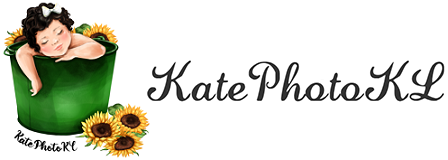If you are just starting to print your own photo albums as a photographer,
here are some insights and tips from my personal experience
At some point, every photographer comes to the idea of expanding their services with printed products — photo albums, frames, or canvases. Not only does this increase the value of a photo session, but it also brings huge personal satisfaction. There is nothing better than seeing your work printed on paper rather than only displayed online.
Photo Books and Albums
When I first started looking into photo book design, there was very little information available. I had to dig through countless resources before I could fully understand the process.
Today, there are many photo labs around the world, but they usually fall into two categories:
Professional photo labs — made specifically for photographers. They often offer better price lists, and some even allow you to order a free test copy. Certain labs require a deposit before you can start working with them. With these labs, you send ready-to-print spreads in JPEG format with exact book size and specifications.
Consumer labs — designed for the mass market. They usually provide their own software, where you upload your photos and create the book. This works well for hobbyists, but for professionals it’s slow and inefficient, as the programs often lag with large JPEG files. Prices are also much higher compared to labs tailored for photographers.
In many countries, professional labs don’t advertise themselves, so finding them can be tricky. The best way is to ask colleagues in Facebook groups or other professional communities.
Where to design your books?
There are several approaches:
Adobe Photoshop — familiar to many photographers, but not the fastest choice. Working with multiple layers and layouts takes a lot of time.
Adobe InDesign — excellent for those who already know the program and have an Adobe subscription.
Specialized photo book software designed for photographers:
SmartAlbums https://www.pixellu.com/smartalbums/
Fundy Designer https://www.fundydesigner.com/
Moments Album Designer https://byteignite.com/moments-album-designer/
I personally chose Moments Album Designer. Why? SmartAlbums and Fundy require monthly or yearly subscriptions, while I wanted a one-time payment.
Moments costs only $59 for lifetime access on two devices, and its functionality is just as good.
The process is simple: download the app, select your preferred book format, upload your photos, and arrange them across spreads. After exporting, you’ll receive JPEG files (each spread as a single image), which you can send to your lab through Google Drive, WeTransfer, or any other transfer service.
Types of photo books
1) Photo book
• Soft or hard cover.
• Thin pages, like a regular magazine.
2) Photo album (my personal choice)
• Thick, laminated pages that feel luxurious.
• Durable hard cover.
• Cover options include:
- Acrylic (glass versions exist but I don’t recommend them — too heavy and fragile).
- Hot stamping with client’s name.
- Metal plate with engraving.
Sizes
• 10×12 in (25×30 cm) — my go-to size.
• 15×12 in (38×30 cm) — a large format that makes every photo look stunning.
• 6×8 in (15×20 cm) — a pocket-size version that’s easy to carry.
For standard photo sessions, 20 spreads are usually enough.
I recommend placing 2–4 photos per spread — this way your work looks elegant and high-end.
Packaging
Boxes can add even more value to a photo book, but they also raise the cost significantly. Many labs already provide flannel protective bags, which are perfectly fine if you want to keep it simple.
Photo Frames and Canvas Prints
Photo frames and canvas prints are easy to order and they always look amazing. They add character to any home and allow your photography to live outside of digital galleries.
My favorite sizes
• 12×15 in (30×38 cm) — looks perfect when displayed in a row of several frames.
• 20×24 in (51×61 cm) — one of the most popular and versatile sizes.
• 24×36 in (61×91 cm) — large enough to decorate a wall on its own without any additional décor.
Printing tips
Before sending your order, resize your image in Photoshop. Create a new file with the exact size you need at 300 dpi resolution. Place your photo into the file and stretch it carefully to the edges.
For large formats (24×36 in and bigger), always check image quality at 100% zoom. Look closely at the eyes or fine details — the photo should not look pixelated.
Adding a personal touch
Printed albums, frames, and canvases feel even more valuable when you add your own professional note with care instructions. For example:
• Avoid direct sunlight — colors may fade over time.
• Keep albums stored flat, not upright, to prevent bending.
• Handle prints with clean, dry hands to protect surfaces.
Such small details show your professionalism and give clients a reason to value your work even more.
